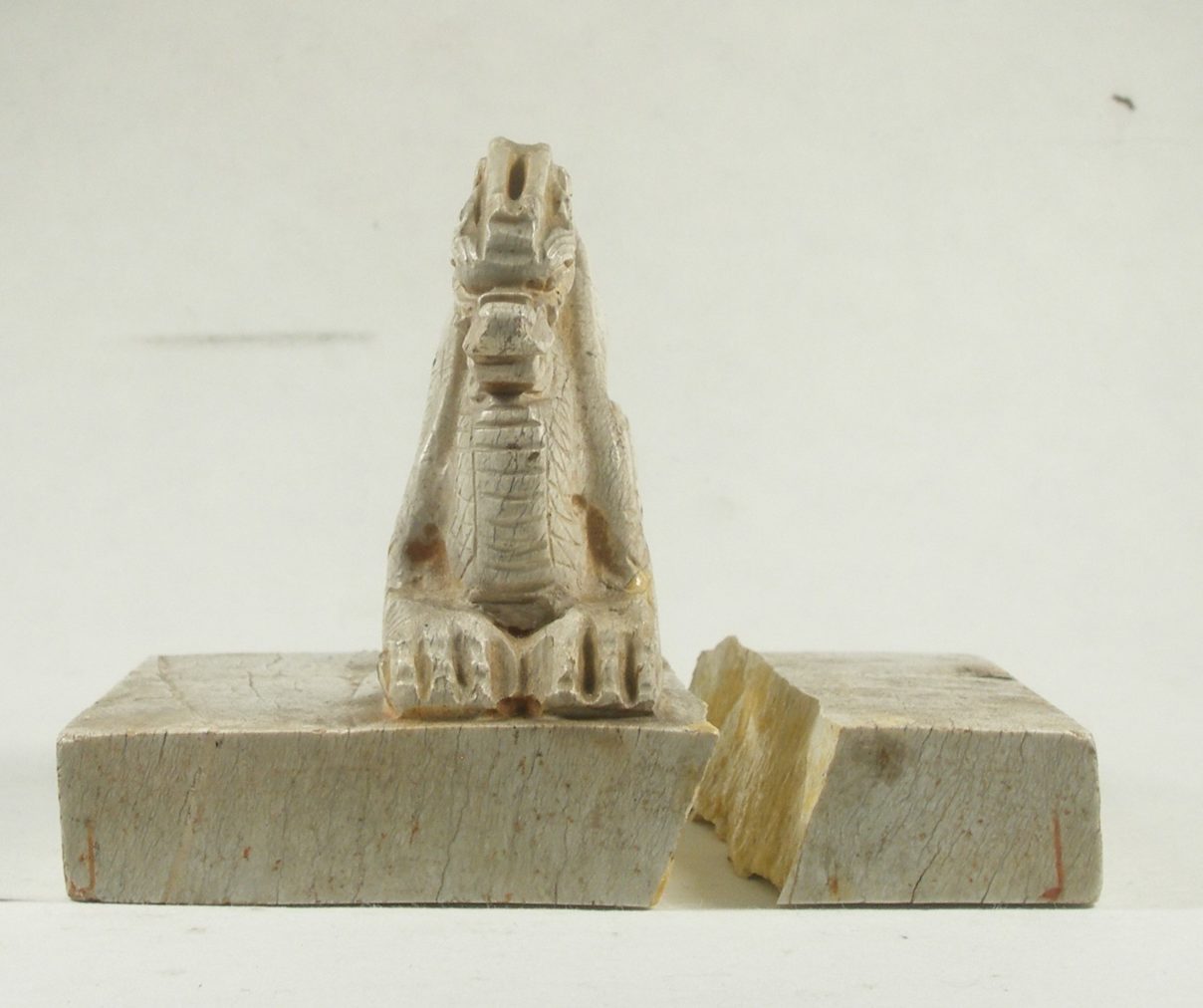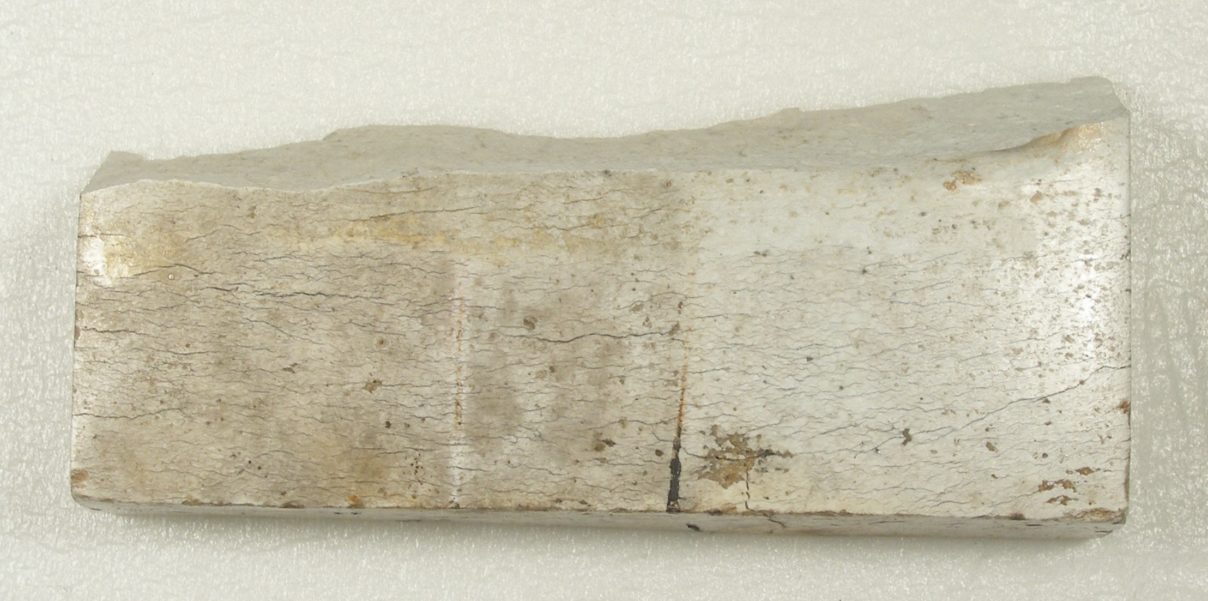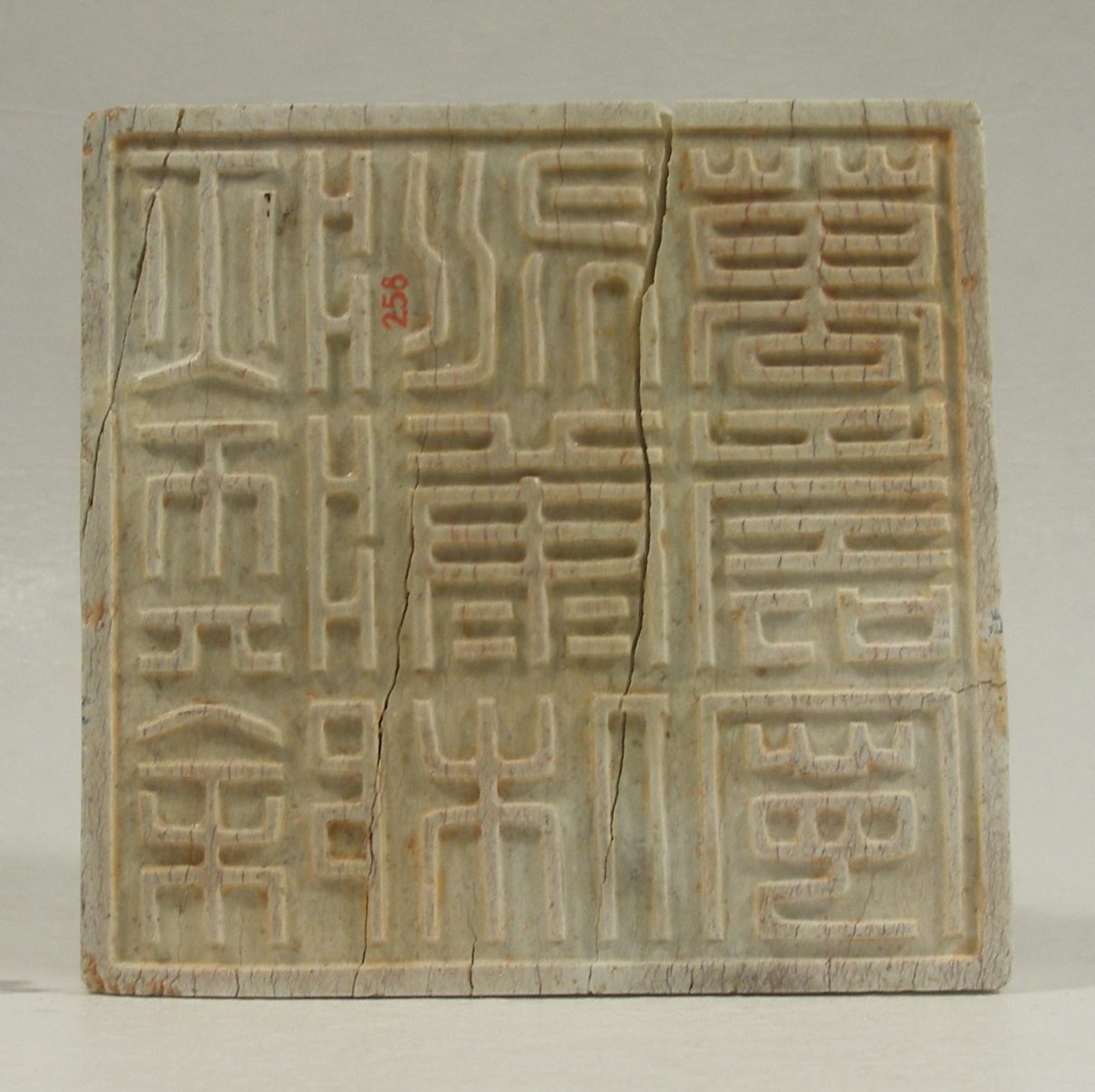Chinese Seal
Object

A Chinese seal which reads, ‘Get rid of diseases, be in good health, and have a long and peaceful life’. This legend is after an early jade seal from Qin (221-207 BC), published in Jigu Yinpu, vol. 1, compiled by Gu Congde in 1575. The seal is surmounted by a humped dragon, which forms a handle, and is made from ‘burnt jade’. There is red ink on the surface of the seal, likely remaining from when it was initially in use.
EDXRF analysis was undertaken on the red ink present on the seal to determine the composition. Due to the presence of mercury and sulphur, the ink was considered to be vermillion, (ground cinnabar).

Condition
- There is dirt on the surface of the object
- The seal has been broken into two pieces
- There has been a repair to one of the corners on the seal and the back feet of the dragon
- Yellow adhesive is visible on the broken edges and the back feet of the dragon.
Conservation

Before surface cleaning could begin, the old, yellow adhesive needed to be removed. The break edges and back feet of the dragon where the adhesive was present, was softened using cotton wool swabs and an appropriate solvent. It was then removed mechanically using a scalpel. As the previous fill repairs were considered to be unstable, they were removed carefully using mechanical means.
The surface of the seal was then surface cleaned using cotton wool swabs with a suitable solvent. On the underside where the red ink was present, the surface was swabbed incredibly carefully so as not to remove any of the ink. Although solvent cleaning removed the majority of the surface dirt, some remained so groomstick was used to remove the more ingrained dirt.

As the surface of the seal was still fairly dark, it was treated with poultices of sepiolite. This removed further ingrained dirt and staining and helped to lighten the overall colour of the seal. The poultices were not applied to the underside where the red ink was present. The surface was then solvent cleaned a second time in order to remove any sepiolite residue.

Once cleaned, two pieces of the seal needed to be adhered together. The adhesive required needed to be strong enough to keep the jade pieces together, but also long term stable so it would not fail at a later date and potentially cause further damage. Once a suitable adhesive was found the jade pieces were adhered together and held in place using electrical tape until the adhesive had cured.
Once the pieces had been adhered together, it was clear there were areas of missing surface material in the form of cracks. The decision was made to fill these cracks for aesthetic purposes. Additionally there was an area of one corner and the back feet of the dragon which also required gap filling. A conservation grade filler material was mixed with an appropriate adhesive into a ‘putty’ consistency and applied to the cracks. As this material was also easily mouldable, it was able to be used to create the missing section of corner. Once the material had cured, the filled sectioned were colour matched to the original jade colouring using acrylic paints.
